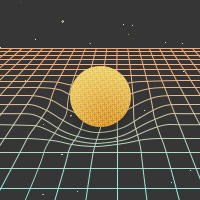SXS News & Updates
Pfeiffer wins Bessel Award
- Details
- Created on Monday, 16 November 2015 23:05
SXS News & Updates
175 orbits!!
- Details
- Created on Tuesday, 17 February 2015 18:51
The SXS collaboration has produced the first computation of black hole
binary coalescence that is capable of following the black holes for
over 175 orbits until they collide. Previous computations were
limited to only a few dozen orbits. The ability to track many orbits
is important for testing the post-Newtonian approximation and for
producing waveforms that cover the entire range of frequencies that
will be seen by LIGO. See the preprint here
(http://arxiv.org/abs/1502.04953).
New Movies
- Details
- Created on Tuesday, 28 October 2014 19:16
(https://www.youtube.com/watch?v=vNnBnRuzHJ0) and
(https://www.youtube.com/watch?v=-Kgfxl1Jk6k) that show how the night
sky would look in the presence of a binary black hole merger. The
image is distorted because the light rays that reach your eye don't
follow straight lines, but are bent (dramatically) by the enormous
spacetime curvature near the black holes. The paths of individual
light rays are computed in order to make these movies. Details can be
found in this paper (http://arxiv.org/abs/1410.7775).
More quickly rotating black holes
- Details
- Created on Thursday, 04 December 2014 19:17




